Table of Contents
Introduction
Imagine VR gaming as your personal gateway to a universe where your wildest digital fantasies come to life. It’s a world where you can reach out and touch the abstract, a place where what was once only imaginable in sci-fi novels is now a vivid reality you can experience. VR gaming isn’t just about playing a game; it’s about living inside it, feeling every moment as if you were truly there.
When we talk about VR gaming today, we’re not just discussing a simple hobby but a revolutionary form of entertainment that beckons you into a breathtaking realm of 360-degree action. The technology has evolved leaps and bounds from its humble beginnings, now offering a smorgasbord of worlds to explore, puzzles to solve, and adventures to embark upon. Each VR gaming session is an opportunity to step into the shoes—or even the wings—of characters and personas you’ve only ever dreamed of embodying.
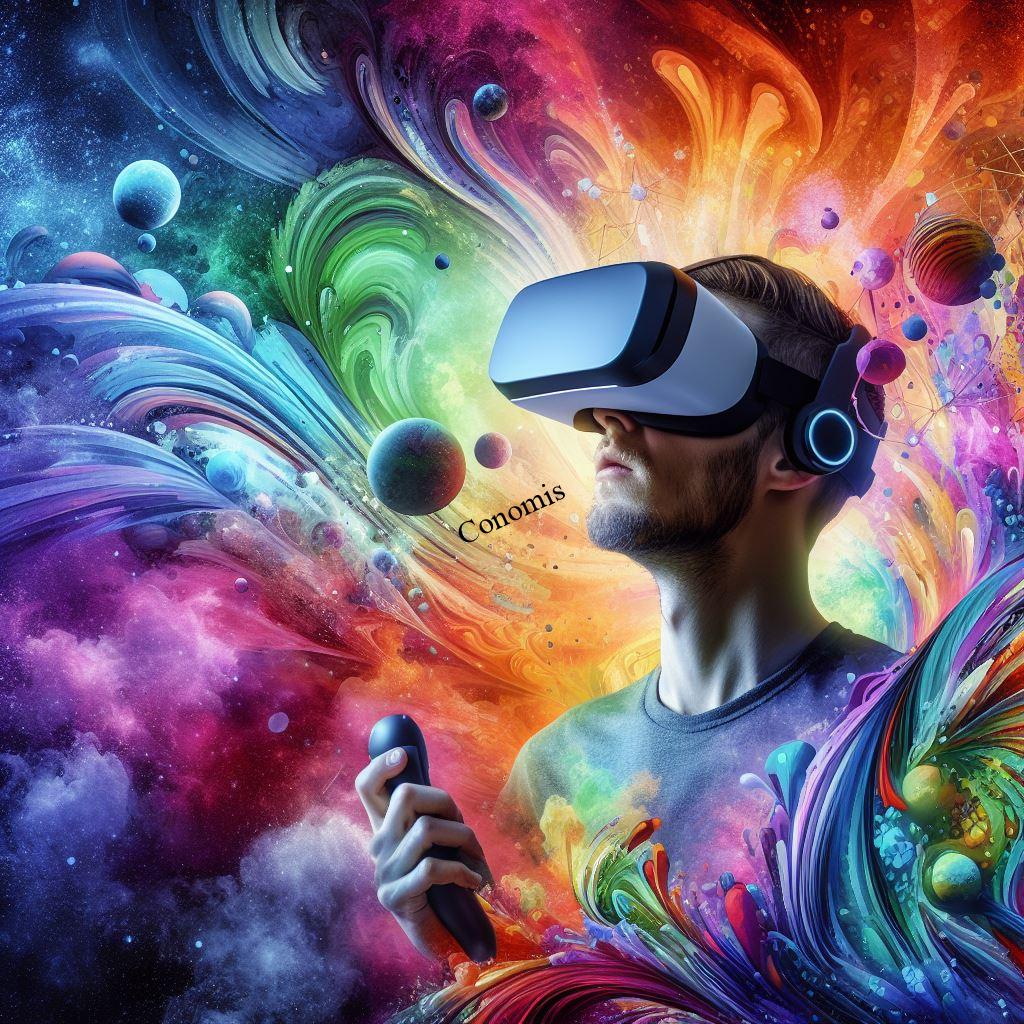
With VR gaming, your living room becomes an alien planet, a medieval castle, or the front row of a concert. The advancements we’re seeing now are just the tip of the iceberg. The industry is continually pushing the envelope, refining and enhancing the technology to deliver more immersive, more realistic experiences. The transformative power of VR gaming is redefining what it means to play, learn, and explore, blurring the lines between what’s real and what’s virtual.
In this deep dive, we’re going to explore the freshest, most groundbreaking developments in VR gaming—those technological marvels that are setting the stage for what’s coming next. These are the changes making VR gaming more accessible, more compelling, and a larger part of our lives than ever before. Get ready to strap on your headset and be transported; the future of VR gaming is here, and it’s more exhilarating than you can imagine.
The Evolution of VR
A Brief History
The story of VR gaming is a gripping saga filled with twists and turns. It’s the kind of tale that takes you from clunky prototypes to sleek headsets resting in living rooms around the world. This adventure began decades ago with the dream of gaming that’s not just seen or heard, but felt and lived.
In the beginning, VR gaming was a fantasy, a concept that seemed as distant as flying cars. The early attempts were ambitious but rough around the edges, often providing a glimpse into the potential of a fully immersive gaming experience. These were the days of arcade VR rigs, where players would marvel at the novelty of stepping into a new world, despite the blocky graphics and limited interactivity.
As years rolled by, VR gaming took several leaps forward. Technology that once seemed out of reach began to materialize in consumer products, and what was once the domain of scientists and tech enthusiasts started knocking on the door of mainstream entertainment. Each iteration of VR gaming gear brought us closer to the dream—better graphics, smoother motion tracking, and a growing library of worlds to explore.

Today, VR gaming is not just a tech buzzword but a growing part of the gaming industry. It’s a place where people can climb impossible mountains, fight alongside intergalactic comrades, or solve mysteries in ancient ruins—all from the comfort of their homes. The technology has become more user-friendly, affordable, and, most importantly, fun to dive into.
As we look back at VR gaming’s history, it’s clear that we are witnessing the early chapters of an epic journey. The next pages are still being written, and they promise even more immersion, interactivity, and innovation. From fledgling beginnings to its current burgeoning state, VR gaming has transformed from a mere concept into a new frontier of digital play.
Milestones in VR Technology
Every chapter in the story of VR technology marks an exciting leap towards the extraordinary VR gaming experiences we enjoy now. It’s a history dotted with remarkable milestones, each one a catalyst that propelled VR gaming from a lofty idea to an enthralling reality. Let’s take a stroll through these pivotal points that have sculpted the landscape of virtual reality as we know it.
The genesis of VR gaming was modest, little more than science experiments with visions of creating alternate realities. The first head-mounted displays were bulky, but they laid the foundational stone, sparking imaginations worldwide. Fast forward, and the introduction of commercially available VR systems brought the thrill of VR gaming to enthusiasts willing to brave the frontier of this new form of play.

Then came the moment when VR gaming truly began to capture hearts. Headsets became more than just a novel idea; they evolved into sophisticated portals to other worlds, with motion tracking that let you become a part of the game, rather than just a spectator. This was VR gaming stepping out of its infancy, offering experiences that were increasingly seamless and immersive.
Now, VR gaming is a vibrant field, bursting with potential. Today’s headsets are marvels of technology, providing high-definition virtual escapades that are more accessible than ever before. We’re witnessing VR gaming not just grow, but flourish, as it finds its place in mainstream culture. From its humble beginnings to its current glory, VR gaming has indeed come a long way, and every milestone has been a building block for the next great innovation. The journey has been nothing short of a revolution, showing us that the full potential of VR gaming is still unfolding before our eyes.
The Current State of VR
Overview of Latest VR Tech
Today’s VR technology is nothing short of a miracle crafted by the hands of engineering and the imagination of creative minds. It’s a blend of complex tech and artistic vision that has given rise to the current landscape of VR gaming—a landscape lush with innovation and excitement.
In the realm of VR gaming, headsets have become more lightweight, user-friendly, and packed with features that deliver deeply engaging experiences. Inside these devices, technology whirs to life, tracking your every movement and translating it into the game in real-time. The result is an interaction so fluid and natural that it can feel like an extension of your own body.
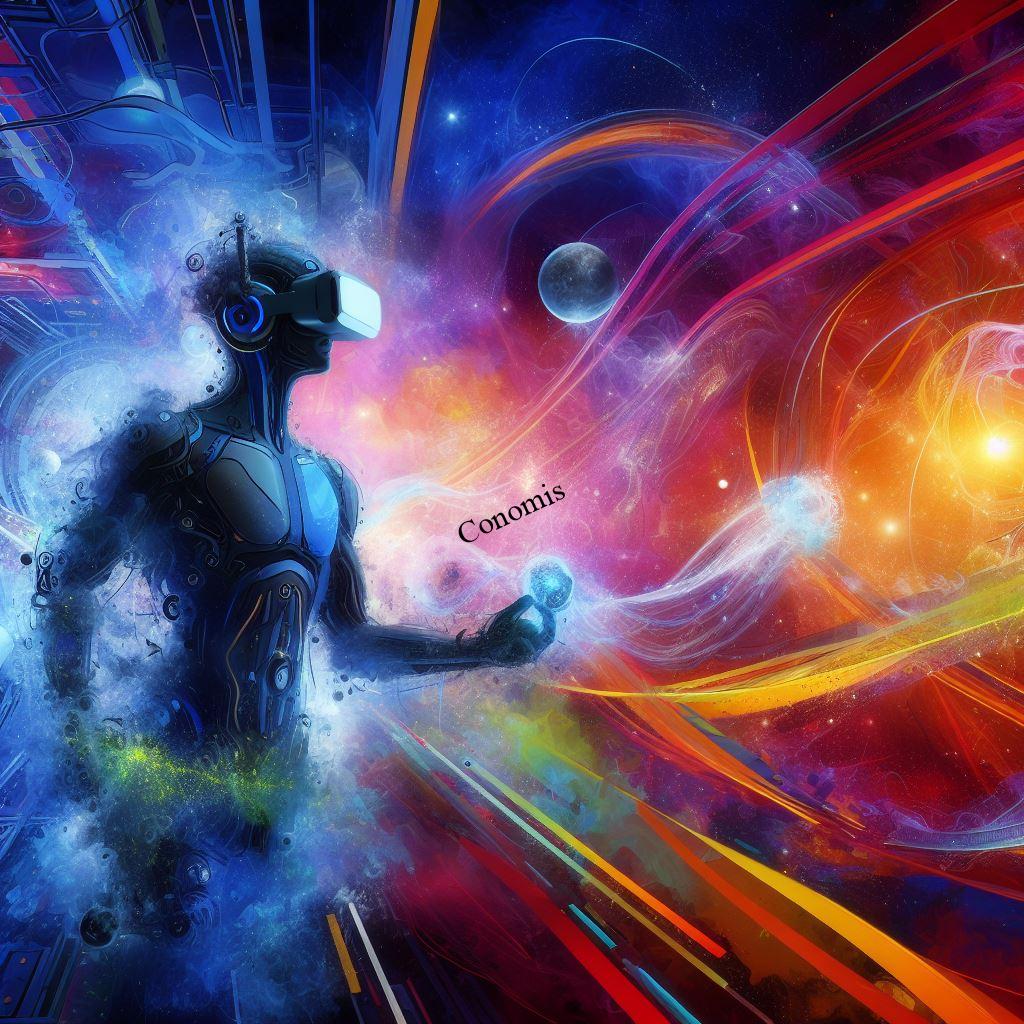
We’re seeing VR gaming technology that not only dazzles the eyes with high-resolution displays but also includes advanced audio systems that place you at the center of a 360-degree soundscape. The controllers are no longer just accessories but magic wands that give you the power to manipulate the virtual environment with precision and ease.
As we examine the latest gear on the market, it’s clear that VR gaming has become a playground for the senses. These devices are not just tools for gaming; they’re your ticket to a new reality, ready to transport you to worlds beyond the walls of your room. Every new development in VR technology is a step further into the future of gaming, making the impossible seem possible.
Popular VR Gaming Platforms
The world of VR gaming is rich with a variety of platforms, each designed to fit different preferences and lifestyles. For those who crave convenience and portability, standalone headsets are a true treasure. They’re the all-in-one packages that free you from the tangle of wires and the necessity of a high-end PC. You can just slip one on and step straight into your gaming adventure, whether you’re in your living room or out on the road.
On the flip side, PC-powered VR gaming setups cater to the enthusiasts who demand the highest quality experiences. These platforms harness the power of advanced PCs to deliver breathtaking graphics and complex simulations. They offer a depth of gameplay that standalone systems can’t match, but this comes at the cost of needing a hefty computer and dealing with a more complicated setup.

Each type of VR gaming platform has its own set of pros and cons. Standalone systems offer unparalleled ease of use and accessibility, while PC-based setups score higher on performance and game complexity. It’s a spectrum of choices that allows every kind of gamer to find their perfect virtual playground. As VR technology continues to evolve, these platforms adapt and grow, promising an even more exciting future for VR gaming.
Advancements in VR Hardware
The hardware propelling VR gaming forward is evolving faster than many could have imagined, with each year bringing about new advancements that stretch the limits of virtual possibility. In this dynamic landscape, the race is on to build more powerful, more immersive, and more accessible VR gaming systems.
Today’s VR gaming rigs are shedding the bulk and wires of their ancestors, with a clear trend towards creating lighter, wireless headsets that offer freedom of movement and ease of use. Inside these sleek devices, cutting-edge processors work tirelessly to render hyper-realistic environments, while high-resolution screens bring these worlds to life with stunning clarity.

But it’s not just about what you see; it’s about what you feel. The latest haptic feedback technologies are fine-tuning the art of touch in VR gaming, allowing players to feel vibrations and movements that mimic real-life sensations, from the rush of wind to the impact of an arrow.
The pace of progress in VR hardware isn’t just exciting—it’s revolutionary. As we delve into the newest developments, it’s clear that the future of VR gaming will be shaped by these innovations, making the virtual worlds we explore richer, deeper, and more enthralling than ever before.
The Gaming Experience
What Makes VR Gaming Unique
VR gaming stands apart from traditional gaming in ways that are both profound and exciting. It’s not just about playing a game; it’s about stepping into it, living within its world. This immersive quality is what makes VR gaming a unique beast in the gaming landscape.
The key difference lies in how you interact with the game world. In traditional gaming, you’re an observer looking in from the outside, controlling your environment with a joystick or keyboard. VR gaming, on the other hand, places you right in the middle of the action. Your body movements translate directly into the game, making you an active participant. Whether you’re swinging a sword or exploring a mystical land, the experience feels more real and visceral.
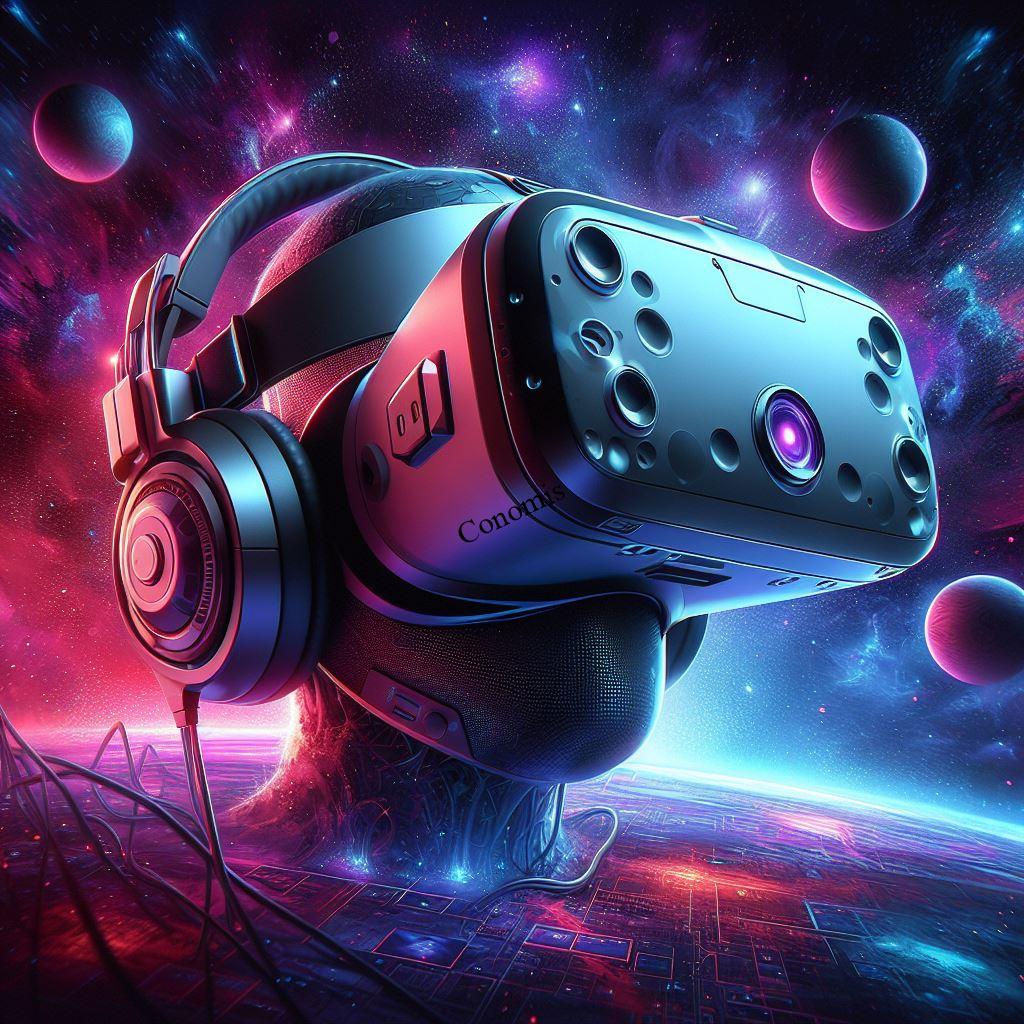
Another aspect that sets VR gaming apart is the level of immersion. With a VR headset on, the real world fades away, replaced by a 360-degree digital universe. It’s a form of escapism that traditional screens can’t match. The sights and sounds of the virtual world surround you, making every moment in the game more intense and engaging.
This unique blend of immersion and interaction is what makes VR gaming not just different, but also incredibly captivating. It’s a fresh way to experience the thrills and stories that games offer, creating memories that feel as real as any lived experience.
The Role of Interactivity
Interactivity is the lifeblood of VR gaming, setting it apart from other gaming experiences. It’s not just about what you see in a VR game, but how you can interact with it. This element of VR gaming has been significantly enhanced with recent technological advancements, making the experience more intuitive and immersive.
Today’s VR gaming systems are equipped with controllers that are much more than just buttons and joysticks. They’re sophisticated devices capable of detecting your movements with precision, allowing you to reach out and virtually touch, grab, and manipulate objects in the game world. This leap in interactivity transforms the gaming experience from a passive to an active one. You’re no longer just pressing buttons; you’re physically engaging with the game.

Additionally, advances in motion tracking mean that VR gaming can now track your whole body movements. This means you can duck, dodge, and weave through virtual environments with your actual body movements. The game responds in real-time to what you do, making for a deeply engaging experience.
This heightened level of interactivity in VR gaming is a game-changer. It’s not just about being in a different world; it’s about actively participating in it. With each technological stride, VR gaming becomes more of an interactive adventure and less of a traditional gaming experience.
VR Gaming Genres
VR gaming isn’t just one-size-fits-all; it’s a diverse playground with genres to suit every taste. Imagine stepping into a horror game where every sound sends a shiver down your spine, or an action-packed adventure where you’re the hero in epic battles. VR gaming brings these experiences to life in a way that’s more intense and immersive than traditional gaming.
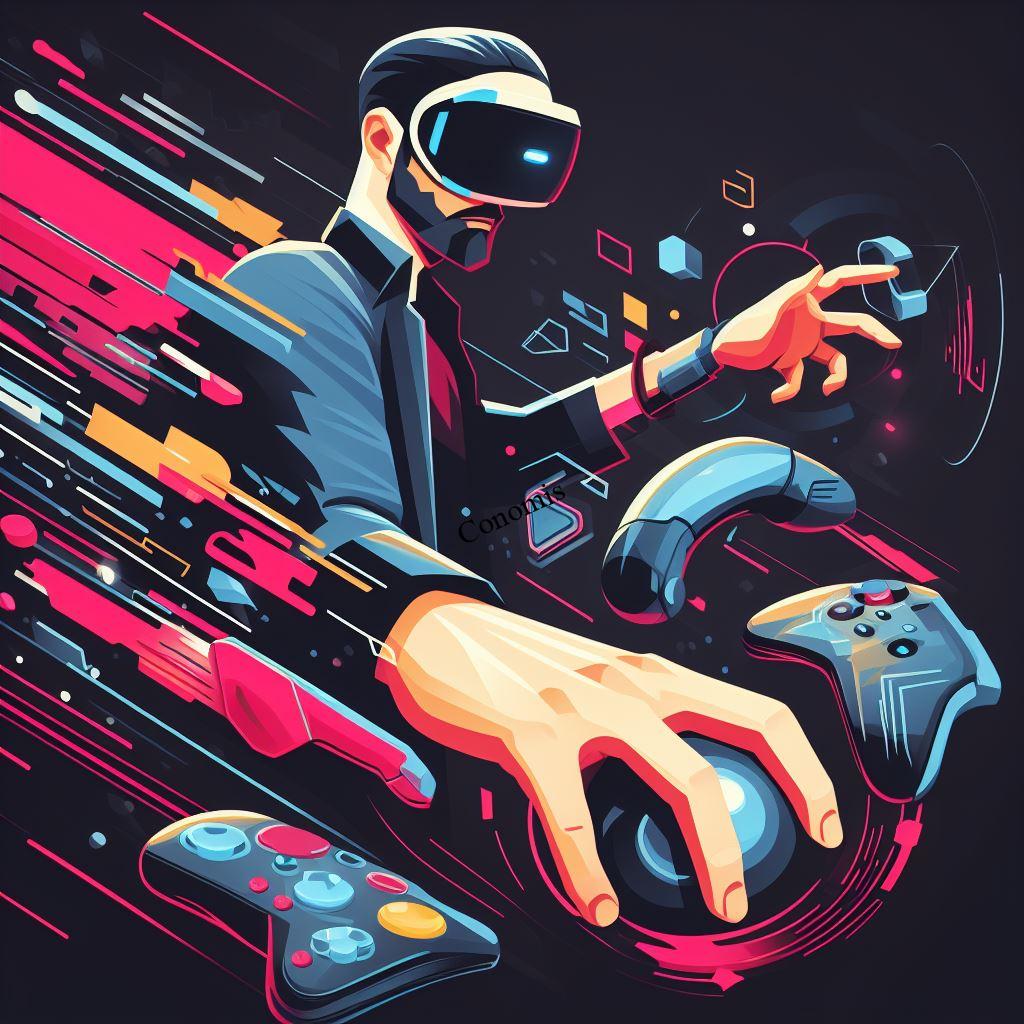
For those who love a mental challenge, puzzle games in VR turn problem-solving into a hands-on experience. You can manipulate objects and explore intricate environments to find solutions. And for the explorers and dreamers, VR gaming offers adventure games where you can traverse exotic lands and uncover hidden secrets, all from the comfort of your living room. The variety and depth of genres in VR gaming ensure that there’s always a new world to discover and a new adventure to embark on.
Behind the Scenes
Development of VR Games
Creating a VR game is a unique blend of art and technology, a process quite distinct from traditional game development. In VR gaming, developers don’t just create a game; they craft an entire world for players to step into. This involves not only designing visually stunning environments but also ensuring that these spaces are interactive and responsive to the player’s movements.

The development of a VR game requires a deep understanding of spatial design, as developers must consider how players navigate and interact within a 3D space. It’s about creating an immersive experience that feels as real as possible. Developers also have to tackle unique challenges, like preventing motion sickness and ensuring intuitive controls. The artistry behind VR gaming is in balancing technical prowess with creative vision, all to transport players into engaging and believable virtual worlds.
Challenges for VR Game Developers
Developing games for VR gaming brings its own set of unique challenges that go beyond those faced in traditional game development. One of the major hurdles is creating a truly immersive experience without causing discomfort to the player. Motion sickness, a common issue in VR, demands careful attention to movement mechanics and visual stability.
Another challenge lies in the limitations of current VR hardware. Developers must optimize their games to run smoothly on a wide range of systems, balancing high-quality graphics with performance. Additionally, designing intuitive and natural-feeling controls for VR environments is no small feat. It requires a deep understanding of human ergonomics to ensure players can interact with the game world effortlessly.
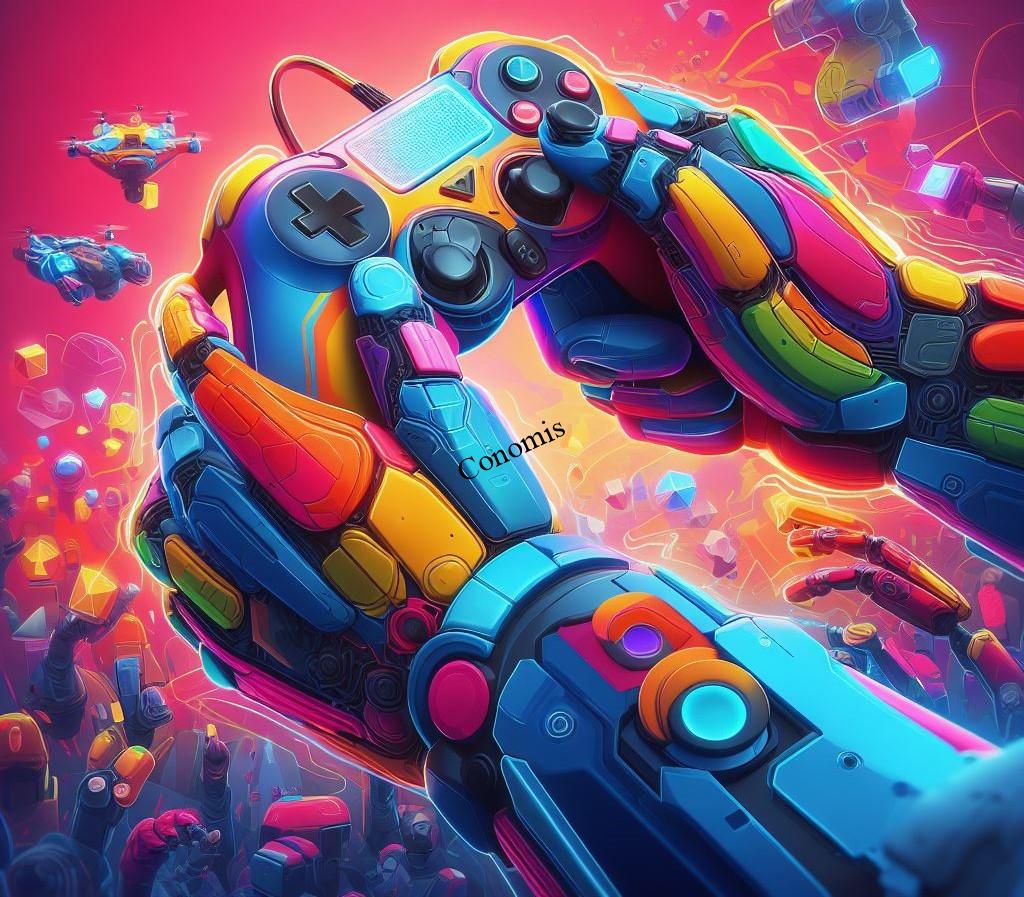
Lastly, there’s the challenge of storytelling in a 360-degree space. In VR gaming, traditional linear narratives might not work as effectively, pushing developers to innovate in how they guide players through the game’s story. These challenges demand creativity, technical skills, and a keen understanding of the VR medium from developers.
Future Prospects
The Future of VR Gaming
The future of VR gaming looks incredibly promising and is ripe for groundbreaking developments. With rapid technological advances, we can expect VR gaming to become even more immersive and lifelike. Future VR systems might be more compact and wireless, removing the physical constraints that current headsets have.
There’s also a strong possibility that VR gaming will integrate more advanced forms of interaction, like gesture recognition or even brain-computer interfaces, for a more intuitive and seamless experience. The graphics are set to become more realistic, blurring the lines between the virtual and real world. Additionally, we might see VR gaming becoming more accessible, reaching a wider audience beyond just the tech-savvy or gaming enthusiasts.
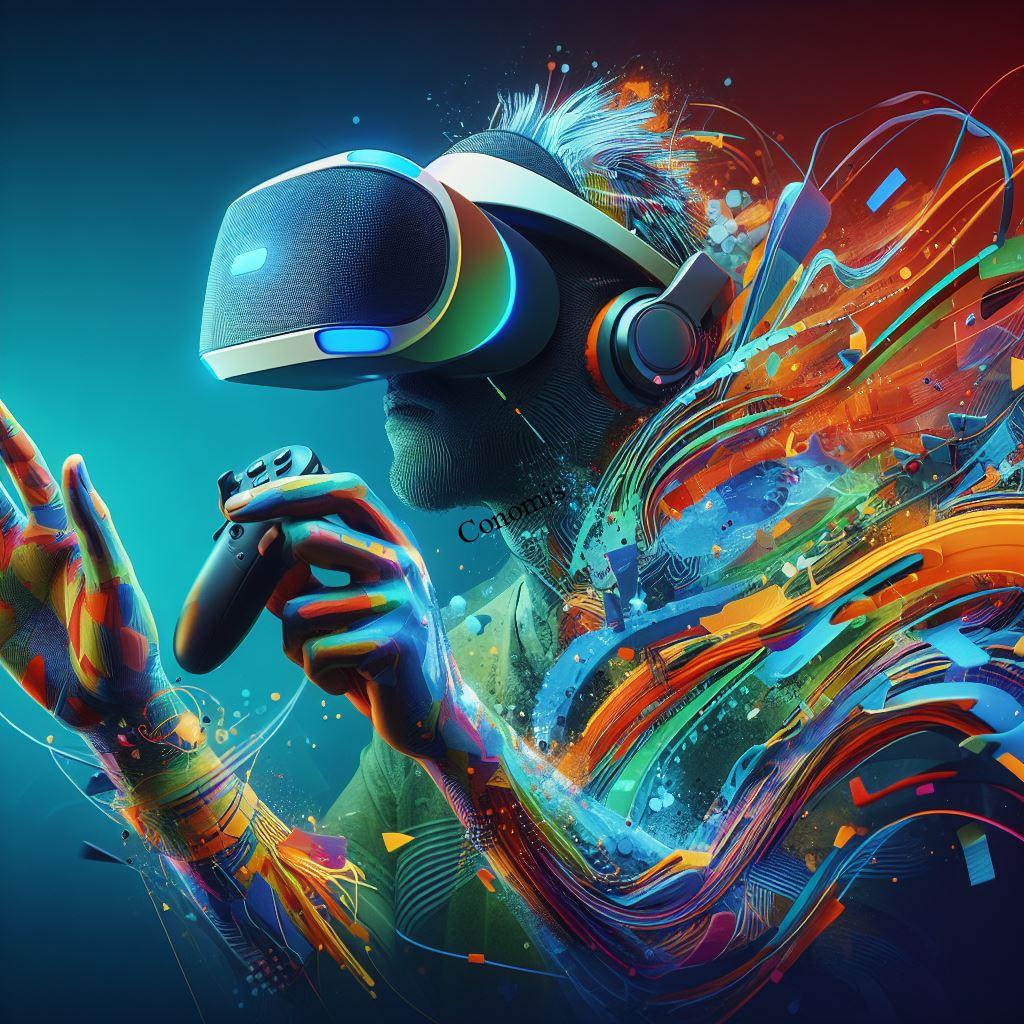
Artificial intelligence could play a significant role, creating more responsive and dynamic game environments that adapt to individual players. The combination of these advancements will not only enhance the gaming experience but also expand VR’s applications in fields like education, training, and social connection.
Predictions and Trends
As we look towards the future, several exciting predictions and trends in VR gaming are emerging. One significant trend is the increasing integration of augmented reality (AR) with VR, leading to more immersive and interactive gaming experiences. This hybrid approach, often referred to as Mixed Reality (MR), will likely offer gamers new ways to engage with their environment, blending the real with the virtual.
We’re also expecting VR gaming to become more social and interconnected. As technology advances, multiplayer VR experiences will become more common, offering new ways for players to collaborate and compete in shared virtual spaces. This could lead to VR becoming a significant platform for social interactions and online communities.

Another trend is the push towards more user-friendly and affordable VR technology. As VR devices become more accessible, we’ll likely see a broader adoption of VR gaming across different demographics. This democratization of VR technology will not only enhance gaming experiences but also open up new applications for VR in areas like education, training, and fitness.
The Role of AI in VR Gaming
Artificial Intelligence (AI) is poised to bring a seismic shift to VR-gaming, potentially transforming how we play and interact in virtual worlds. The incorporation of AI in VR-gaming could lead to more dynamic and responsive environments. Imagine game worlds that adapt in real-time to your actions, creating a personalized and unpredictable gaming experience.
AI could also enhance NPC (Non-Playable Character) behavior, making them more realistic and engaging. These characters could learn and react in more complex ways, adding depth to the storytelling and interactivity. Furthermore, AI might streamline game development, assisting creators in designing intricate and detailed virtual worlds more efficiently.

Another exciting possibility is AI-driven analytics within VR-gaming, offering insights into player behavior and preferences. This could lead to more tailored and enjoyable gaming experiences, as developers use this data to fine-tune game mechanics and storylines. The integration of AI into VR-gaming is not just about advanced features; it’s about reshaping the entire gaming landscape with smarter, more immersive, and deeply engaging experiences.
User Experience
Enhancing User Comfort
Ensuring comfort in VR-gaming is crucial for an enjoyable experience. Recently, there have been significant strides in making VR headsets more user-friendly. Manufacturers are focusing on designing lighter and more ergonomic headsets to reduce strain on the neck and shoulders. Adjustable straps and padding are becoming standard, allowing for a more personalized and comfortable fit for various head shapes and sizes.
Another aspect of enhancing comfort in VR-gaming is addressing motion sickness, a common challenge for many players. Developers are finding innovative ways to minimize this issue, such as improving motion tracking and frame rates to create smoother and more stable visual experiences. They’re also experimenting with in-game movement mechanics that feel more natural and less disorienting.
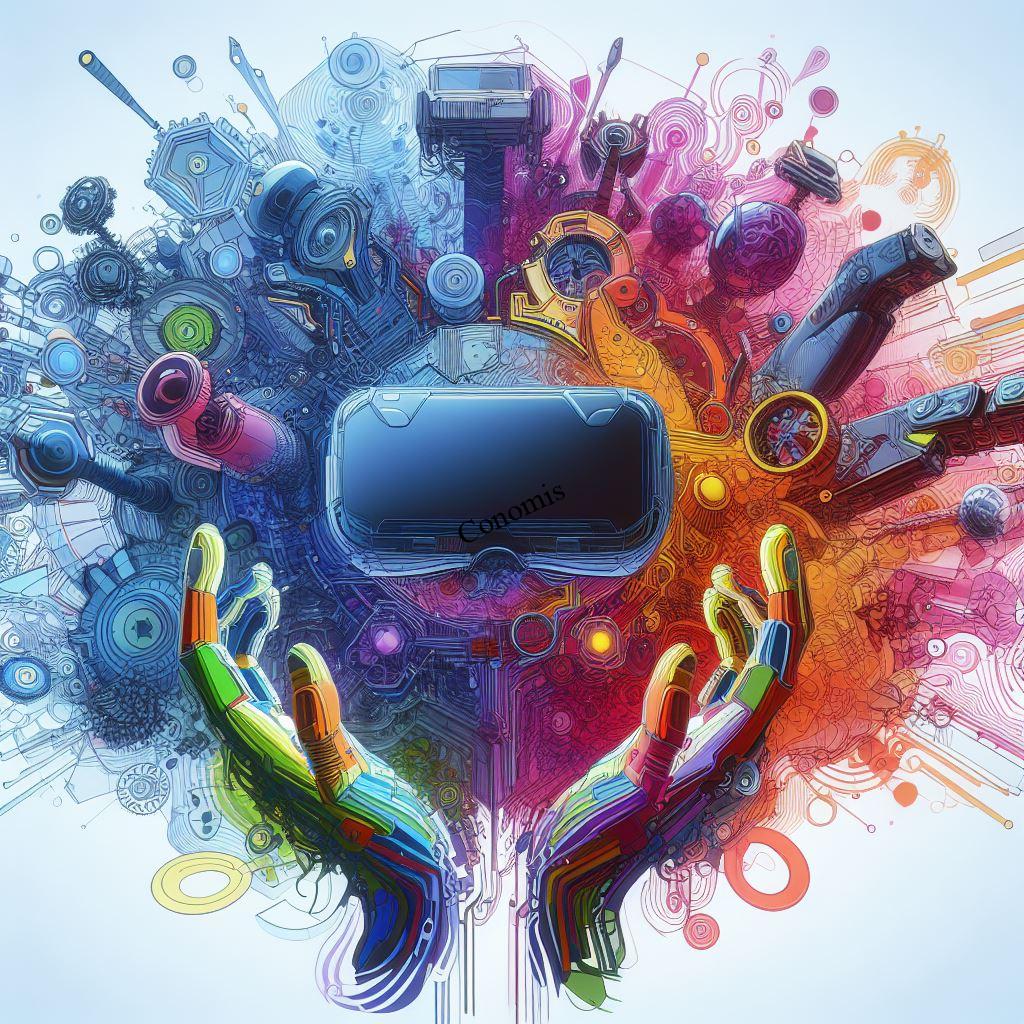
Additionally, there’s a growing emphasis on creating user interfaces and control schemes in VR games that are intuitive and easy to use, reducing the learning curve and making the games accessible to a broader audience. These improvements in hardware and software are making VR gaming more comfortable and inviting, ensuring that players can fully immerse themselves in the virtual world without discomfort.
Accessibility in VR Gaming
Making VR gaming accessible to everyone is an important goal for the industry. Efforts are being made to ensure that this exciting technology can be enjoyed by as many people as possible, regardless of their physical abilities or financial constraints. Developers are increasingly focusing on designing VR games with adjustable settings to accommodate different needs, such as options for seated play or alternative control schemes for those with limited mobility.
Cost is another barrier to accessibility in VR-gaming. To address this, some companies are working on developing more affordable VR headsets without compromising too much on quality. This would make VR- gaming more attainable for a wider audience.
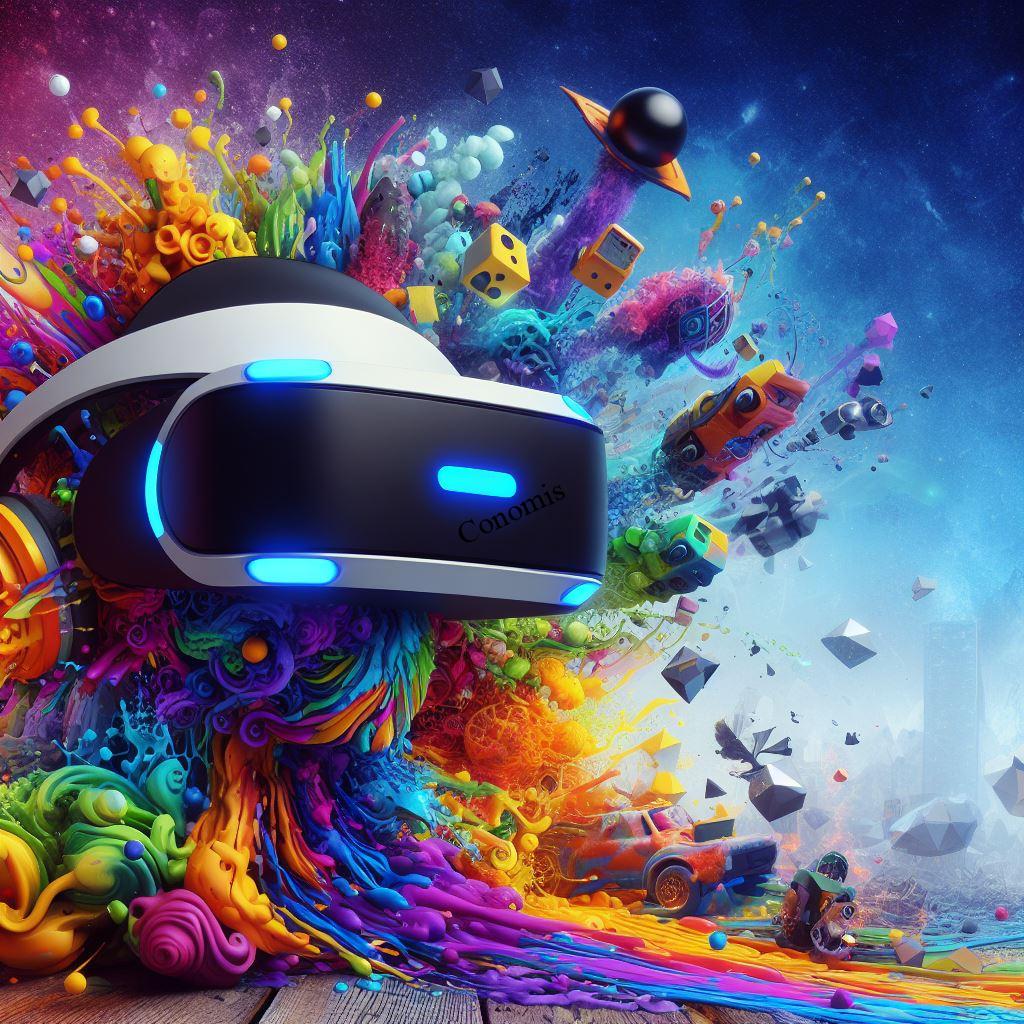
Additionally, there’s a push towards creating more intuitive and user-friendly interfaces in VR games. This includes simplifying menus and controls, making them easier to navigate for both VR veterans and newcomers alike. By addressing these aspects, the VR gaming industry is moving towards a future where virtual reality experiences are accessible and enjoyable for everyone.
Conclusion
VR gaming has evolved from being a mere hobby to a portal that opens up to incredible new worlds and experiences. It’s not just about playing games; it’s about immersing yourself in environments that were once only imaginable. The leaps we’ve seen in VR gaming technology aren’t just upgrading our playtime – they’re reshaping the very fabric of entertainment.
The advancements in VR gaming are breaking down old barriers and setting new standards for what we consider engaging and interactive. From realistic graphics to intuitive controls, every new development in VR gaming brings us closer to a future where the line between the virtual and the real is increasingly blurred. This isn’t just about having fun; it’s about experiencing stories and adventures in a way that was never possible before.

As VR-gaming continues to grow and evolve, it’s exciting to think about what lies ahead. We’re on the cusp of a new era in entertainment, one where VR-gaming plays a pivotal role in defining how we experience and interact with digital content. The possibilities are vast and varied, making this an exciting time for gamers and tech enthusiasts alike. With each step forward, VR-gaming is not just meeting our expectations; it’s exceeding them, promising a future rich with unexplored virtual landscapes waiting to be discovered.
FAQ
What’s the top VR gaming headset out now?
The Valve Index and Oculus Quest 2 are leading the market with their high-resolution displays and immersive gameplay experiences.
Is VR gaming social?
Yes, many VR games offer multiplayer modes and there are social VR platforms designed for interaction, making VR a space for communal experiences.
What’s the future of VR gaming?
Expect lighter, wireless headsets, advanced AI integration, and cloud-based gaming, offering more realistic and accessible VR experiences within five years.
What barriers do new VR gamers face?
The cost of equipment, the need for space to play, and initial discomfort like motion sickness are common barriers for newcomers to VR gaming.
How will AI change VR gaming?
AI will enhance VR with smarter in-game characters, dynamic environments, and personalized gaming experiences that adapt to player behaviors and preferences.
You Can Also Read
https://en.wikipedia.org/wiki/Virtual_reality_game
https://www.techtarget.com/whatis/definition/virtual-reality-gaming-VR-gaming
Conomis Thoughts
![]() Copyright 2023 CONOMIS
Copyright 2023 CONOMIS

